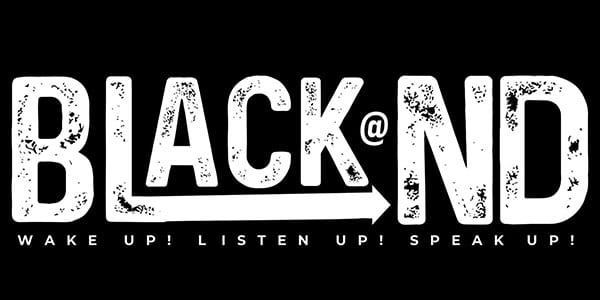Communicating Across Cultures – Applying What We Know About Culture
Subscribe to the ThinkND podcast on Apple, Spotify, or Google.
Featured Speakers:
- Debra Charlesworth, VP of Corporate Communications, BioMarin Pharmaceuticals
- James S. O’Rourke, American rhetorician and Professor of Management at the University of Notre Dame.
- Amanda McKendree, Arthur F. and Mary J. O’Neil Director of the Fanning Center for Business Communication, Associate Teaching Professor, University of Notre Dame.
The fourth and final virtual event in the Communicating Across Cultures series featured a look into communication and culture inside BioMarin Pharmaceuticals. This discussion was led by James O’Rourke, a professor in the Mendoza College of Business, with guest speaker, Debra Charlesworth ‘90, VP of Corporate Communications, BioMarin Pharmaceuticals, and moderated by Amanda McKendree, professor in the Mendoza College of Business. This event explored BioMarin’s organizational culture, approaches to communication and diversity, as well as where BioMarin is headed for the future. Charlesworth joined BioMarin in 2012 and is responsible for developing corporate communications strategy to support corporate goals. She works closely with the executive team to raise BioMarin’s profile as a scientific leader in developing therapies for patients with rare genetic diseases.
The conversation kicked off by discussing how Charlesworth defines culture at BioMarin. Charlesworth noted that the definition of culture could be different for various employees, but she believed a core part of BioMarin’s culture is its patient focus. Since BioMarin’s patient population is small, they have a privilege to really get to know their patients. O’Rourke asked Charlesworth if BioMarin takes time to define and measure the organizational culture. Charlesworth believed that the more the company grows, the more vital it will be to define culture. As BioMarin scales up in size and employees, Charlesworth thinks that having a defined culture will ultimately help the company preserve its meaning. When BioMarin hires new employees, they look for four specific attributes in the candidate which helps them find the right fit. These attributes include good decision making skills, influence, agility, and leadership.
O’Rourke shifted the conversation into one about diversity and inclusion. Charlesworth believes BioMarin has a strong foundation in diversity and inclusion, especially because their target focus is on rare diseases. Rare diseases, she considers, are like a minority group amongst other pharmaceutical research. BioMarin has also brought in consultancies who’ve helped build their diversity efforts. They’ve created employee resource groups and diversity circles with direct lines of communication to executive leadership, which fosters and encourages difficult conversation within the company around diversity, equity, and inclusion. The company also looks each year to make sure salaries and training programs are competitive against peer organizations.
The conversation concluded with a discussion about where BioMarin is headed in the future in terms of their corporate communication team. Charlesworth described her communications team of four people as small, but mighty. In the future, she hopes to scale up this team and add more employees because compared to other organizations, they are on the lower end of the spectrum as a corporate communications team. Scaling up will allow BioMarin to become more effective in their communications and will help grow their reach and influence.
- Culture is something that is continually shifting and changing (5:15)
- Although employees at BioMarin may define culture differently, an overarching theme is the patient focus (18:28)
- If BioMarin can define their culture succinctly, the culture will be preserved as they grow (24:35)
- BioMarin recently started formalizing their diversity, equity, and inclusion efforts to create programs around fostering conversation around diversity, equity, and inclusion (27:50)
- BioMarin looks for certain skills in an employee that fits the company’s culture and goals (30:55)
- While BioMarin’s communication team is small, they punch above their weight because they partner with external PR support. Charlesworth hopes to scale-up the team in the future (47:13)
- “One of the things we’ve all observed, this year in particular, is that ideas and values are shifting” (James O’Rourke; 5:10)
- Our patient populations are really small, so we really get to know our patients on a level that most other drug companies don’t have the benefit” (Debra Charlesworth; 18:42)
- “We are fortunate in that our whole business is based on diversity. The patient populations we serve are minorities. They are the neglected diseases.” (Debra Charlesworth; 28:05)
- “Brand is what you say you are, reputation is what everyone else says you are” (James O’Rourke; 51:58)
Related Content
Shannon Sharpe/Katt Williams, The Black Impact on the NFL Super Bowl & Taraji P Henson
In the first episode for Season 8, Isaiah and Tykiera talk about the Shannon Sharpe/Katt Williams Interview that took the internet by storm at the beginning of the year as well as...
watch videoEveryday Holiness: John Cavadini
Dr. John Cavadini, director of the McGrath Institute for Church Life and professor in the theology department at the University of Notre Dame, shares some of the hidden aspects...
View EventClimate Change and The Limits of Narrative
Join the Kellogg Institute for the introductory session of a workshop refining Kellogg Faculty Fellow Roy Scranton’s draft book project “Ethical Pessimism: Climate Change and...
View Event


